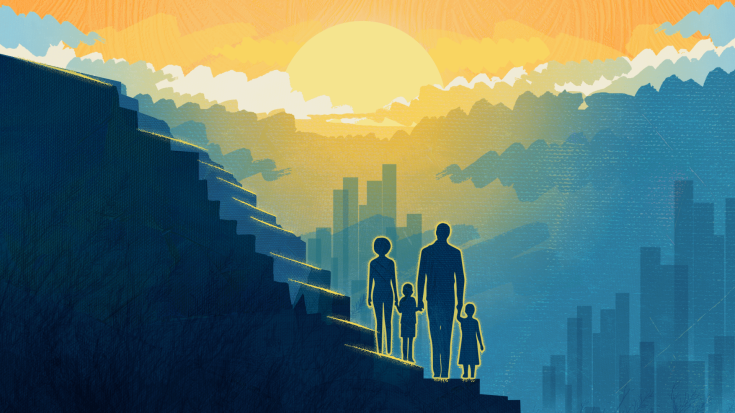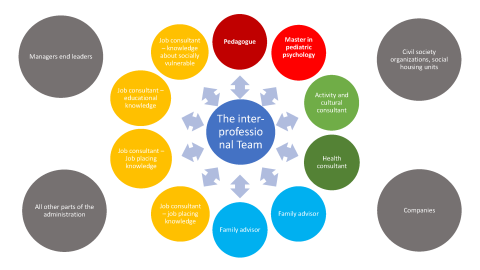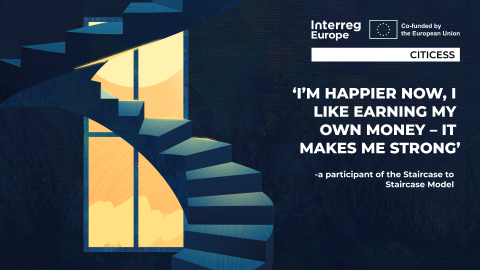Introducing Staircase to Staircase

In the first part of introducing Staircase to Staircase we explored the challenges the social system faces when providing assistance for the most vulnerable, marginalized groups, and discovered the principles the model used when planning their method. But how does it happen in practice?
The story takes place in Aarhus, Denmark, in a special neighbourhood: Gellerup. The area has been known for its high crime rate and social problems: in 2014 the population of the Gellerupparken district fulfilled all 5 criteria for the ghetto list: 80% were either migrants or descendants of migrants from non-Western countries, 52.3% were unemployed, 4.76% had criminal records. Of the 30-59 year-olds, 57.1% had only primary education.
The criteria for being included in the project target group was that one of the parents should be unemployed for at least a year: they listed 300 families, with the average unemployment rate being 9 years. In this pilot 62 families could participate, so there was also a control group proving the effectiveness of the method. These families were not only unemployed but had several different problems, health issues, social problems, a third of the families did not speak danish at all.
On the other side of the project were the employees of the municipality: they hired an interprofessional team including job consultants, family advisors, pedagogues, pediatric psychologists, activity and cultural consultants and health consultants. These fields usually work separately in their own institutions, but in this project they had to work together as one team. The team also moved to the neighbourhood: a social center was set up in Gellerup.

And then the Staircase to Staircase part of the project began: the team members started knocking on doors, going staircase to staircase, asking the families to be involved in the project one-by-one, personally. They had a lot of trust issues in the beginning: it is easy to see why it is hard to believe that employees of the municipalities are knocking on the door, offering help with everything they can.
Each family had two primary contacts of the team members, and started to build a relationship with them.
They could start working together: defining with the family what they need help with first, coming up with a plan to solve their issues. The contacts of the families could work with their team to get help on matters that are not their expertise, the interprofessional team could cover most of the issues, and they also had contact with experts from other institutions. Following the job first approach they put a lot of effort in finding the right job for the participants: it does take a lot of effort, usually 3 jobs until they find the one where the participarts actually stay, that can make the project truly sustainable.
The project is going on now for 4,5 years, let’s see some numbers on the results so far:
• 33 adults have had a fulltime job or education. Right now, 25.
• 32 adults have had a part time job. Right now, 16
• 24 adults are in supported jobs (Flex job).
• 13 adults has been granted early retirement
• 49 youngsters have had a job beside school. Right now, 40.
• In 32 families, we’re helping with different difficulties regarding
the children – concerning 58 children.
• A lot of children has started free-time activities – e.g., football
• 36 adults has been engaged in health activities – 70 different activities

